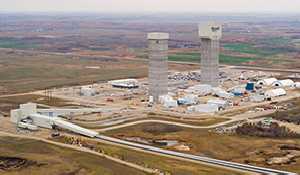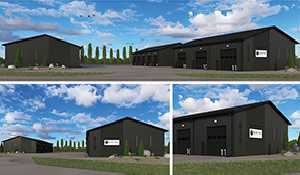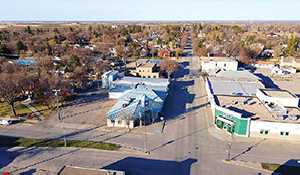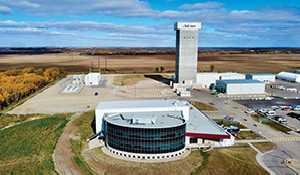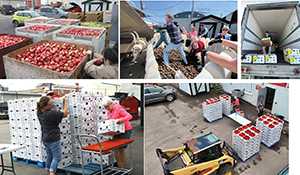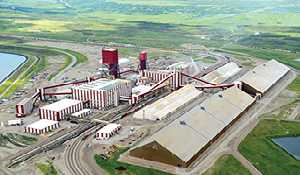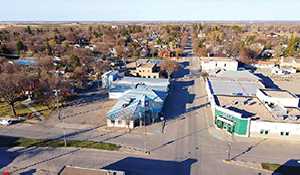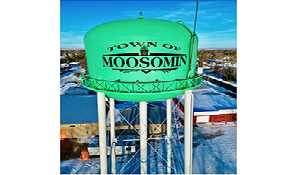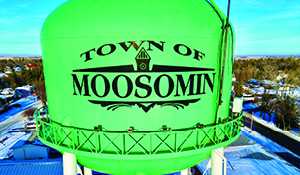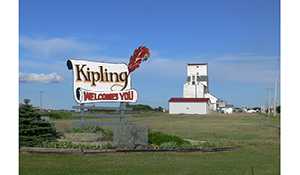Esterhazy water treatment plant still on schedule to become operational in 2026
January 6, 2025, 1:51 pm
Ryan Kiedrowski, Local Journalism Initiative Reporter
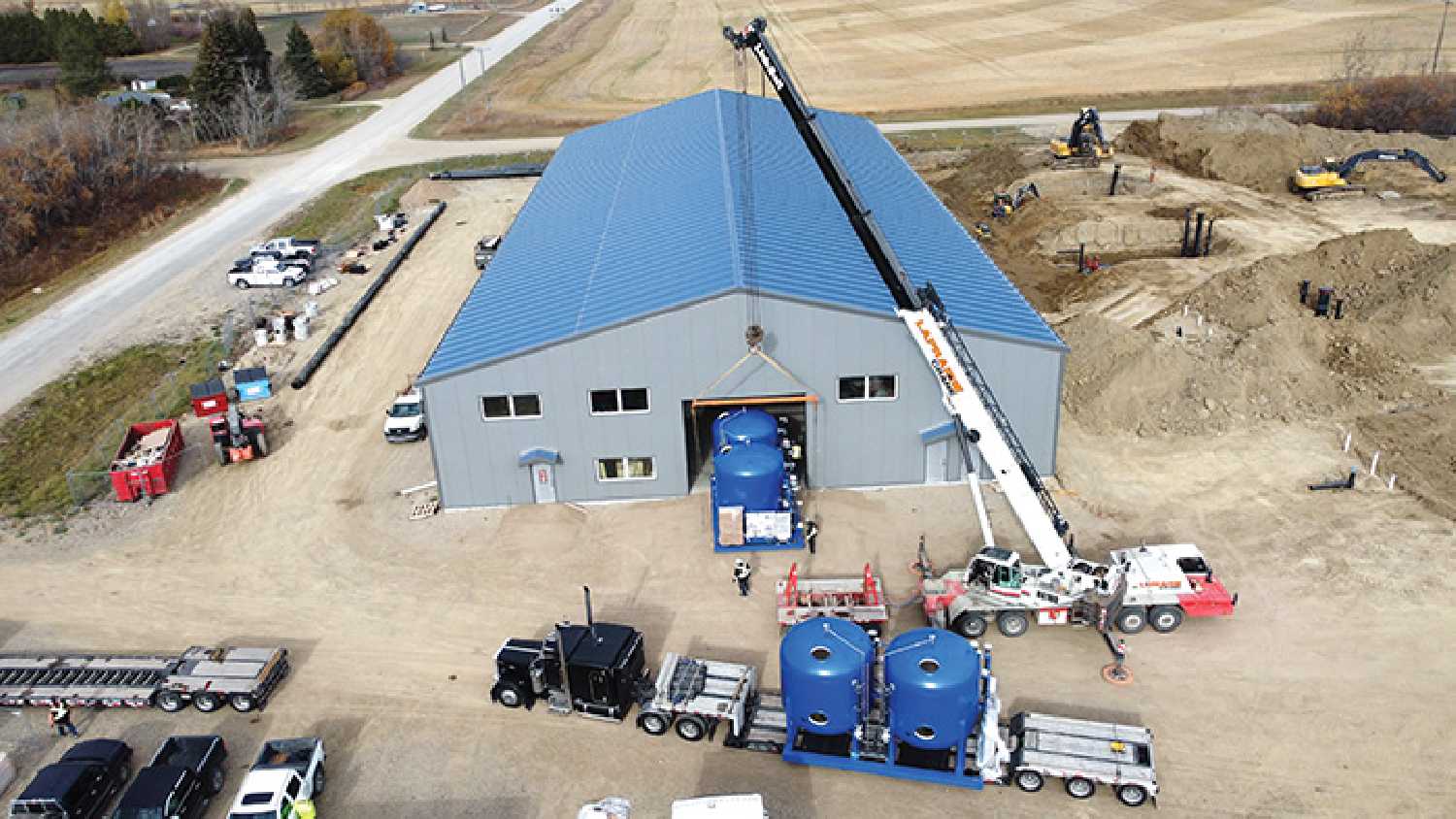

While the throes of winter may put a freeze on some construction projects, work on the new $30 million water treatment plant in Esterhazy continues to make progress. The current facility was last upgraded in 1975 and many advancements have been made in the world of water since then.
“It will be a very significant upgrade, for sure,” said Brandi Neibrandt, an engineer with Allied Infrastructure who has worked very closely on the new Esterhazy facility. “It will be like going from driving a car that was built in the 1960s to jumping into 2024 technology, so you can only imagine how things have changed.”
Aging infrastructure and water regulation changes are two main reasons for many communities across the province to upgrade their water treatment plants, and in Esterhazy’s case, the decision was made for a major upgrade that considers future needs. While the estimated $30 million seemed like an astronomical number at first, joint funding from the federal ($11.9 million) and provincial governments ($9.9 million) helped significantly, with just over $8 million left for the town to put toward the project.
Central to the new plant is the bio-filtration system that not only saves water, but assists in reducing ammonia—an issue common across Saskatchewan, with high levels found in Esterhazy.
“It’s one of the only processes other than reverse osmosis that assists in reducing that ammonia,” Neibrandt said. “No need for any kind of chemical addition, and then the reduction in the amount of backwash that’s required.”
Currently, with conventional green sand gravity filters, there’s an estimated recovery rate of 80 per cent.
“Out of the water that comes into the plant, 20 per cent goes to waste, to assist in or maintain that process, versus the new plant which will have biological treatment, and that reduces or significantly improves our recovery rate,” Neibrandt explained.
Instead of a backwash happening three times a week, with bio-filtration technology that becomes once every three weeks instead.
For homeowners, the new technology translates to not having to purchase appliances as often due to hard water damage and no need for water softener systems.
“Some might still select to have water softeners, but I would suspect that with the quality of water, it would not be necessary like it is right now,” Neibrandt said. “Even the under-the-table reverse osmosis systems, those could be removed. It will be really nice drinking water, in my opinion, but everybody likes different water!”
The Covid crunch
As with most construction projects started more than five years ago, momentum on the new water treatment plant hit a huge snag when the 2020 pandemic hit. Seemingly overnight, projects everywhere faced major delays and a massive spike in associated costs, and Esterhazy was not immune.
“I’d say lead times are probably the biggest effect it’s had,” Neibrandt replied when asked how Covid affected the project. “Material availability and those sorts of things. So when the superstructure, for example, was tendered, we contacted a number of pre-engineered building manufacturers, and they had advised us that the lead times on those buildings range from 30 weeks to 52 weeks—that’s just to get material from their shop to site. So it was fairly significant when you’re looking at a year right there, just in waiting for material to come.”
Lead times for process equipment and electrical reflected the same projections, making any timeline estimations nothing more than a shot in the dark.
“How do you ever plan, and then not to mention the potential for delays, that’s what they tell you at the time,” Neibrandt said. “Everybody’s got a little bit of a caveat clause following the pandemic.”
The ripples from those pandemic delays are still being felt, but Neibrandt does see some improvement on the horizon.
“It appears that things are maybe getting a little bit better, or maybe we’re just getting used to those types of lead times,” she said. “People see it when they go to the grocery store, those additional costs. Now look at some specialized equipment. Imagine how difficult it is to get that.”
Project still on time
Despite those challenges, Neibrandt estimates the project overall being on schedule as work continues through the winter.
“We’re sitting in a pretty good place for commissioning and hopefully being in operation in spring/fall of 2026, which I know sounds like a long time to probably a lot of people, but again, with 52-week lead times, it’s been challenging in that way and just a lot of things in order to minimize the amount of disruptions to the town as a whole,” she said. “You need to ensure that your plan accommodates ongoing operations of the existing water treatment plant during commissioning of the new water treatment plant.”
The bio-filtration system also needs time to get accustomed to its environment, which Neibrandt says can take up to six months.
“Those bio-filters require a period that they call seeding, so that’s just developing that biological mass to acclimatize so they get used to the environment that they’re going to be in and start to really work,” she said. “That’s a fairly significant amount of time where things will be ready, but not operating.”
Current and future work
Last August, Neibrandt gave the community an update on where the water treatment plant project was at during a town hall meeting. At that time, she noted the next step would be linking the raw water line to the new plant.
“The raw water tie-in went really well,” she said. “We now have the ability by operation of a couple of gate valves to bring raw water into the new water plant or the old water plant. That’s a fairly significant requirement in order to commission, so that’s really good to get out of the way.”
Work during the coming cold winter weeks includes process mechanical, interior, and electrical items.
“They’re still working on welding or fabricating of all the stainless steel pipe, I would imagine they’ll get their first shipment in the next month or so, then they’ll start installing that pipe in place,” Neibrandt said. “Then the interior building works is still underway, so all the rooms and finishing. Electrical will be underway, and then the reservoirs was just awarded just before Christmas by the town to H2Flow, so that will be for above grade reservoirs.”
Room for future expansion has been considered for the new water treatment plant, anticipating growth of not only local community demands, but also use of neighbouring municipalities as well.
“The current treatment equipment that’s being installed will accommodate current demands and some expansion for either regionalization or town growth,” confirmed Neibrandt.
The building has also been built with expansion in mind.
“If you look at the way that the building is constructed, you’ll notice that there’s a gable end so you can easily expand onto that building on the north or south sides,” said Neibrandt. “You’re limited by the physical site space, but I think they have a long way to go before they have to start thinking about that.”
Having the opportunity to be part of such a massive project is a career highlight for Neibrandt, especially being so close to home for her.
“It’s definitely something that I will be proud of for my career and such an awesome opportunity,” she said. “Working with really great people in Esterhaxy, that’s been pretty awesome, too. I’m originally from the Yorkton area, so it’s pretty nice to give back to people that you care about.”



